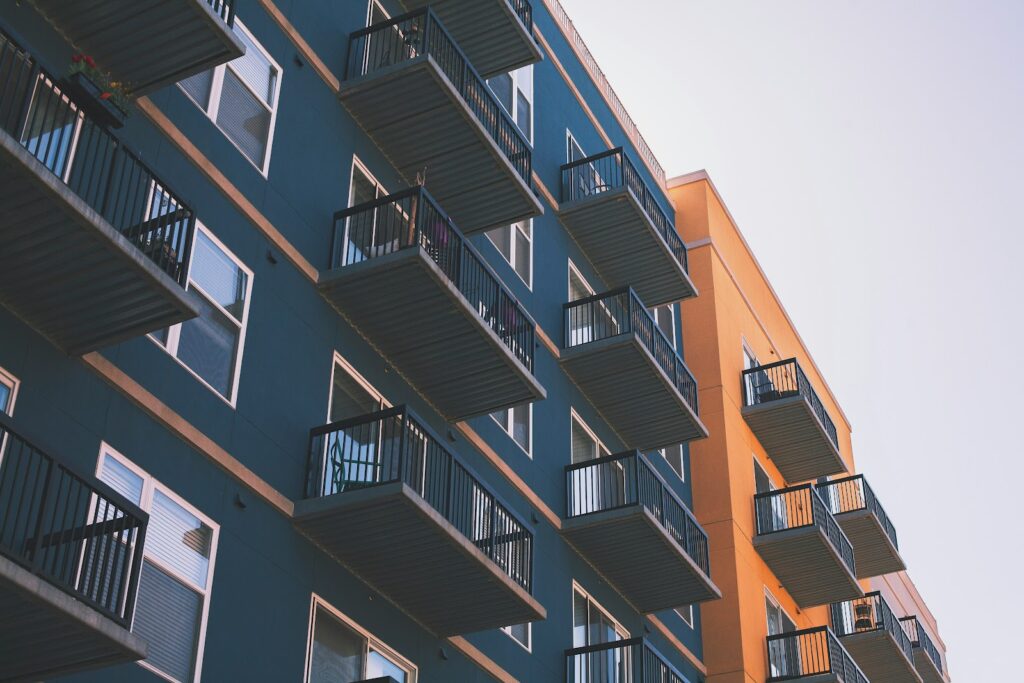Learn all you need to know on how to get a home loan with low income

Buying a house is a significant milestone for many Australians. However, for those with lower incomes, the dream of homeownership may seem out of reach. Understanding the landscape of home loans and government assistance programs can make this dream a reality. Let’s explore what it takes to purchase a house when earning a lower income.
Understanding Housing Loans Loans: Eligibility and Options
Before applying for a home loan, individuals need to check if they are eligible. Lenders assess various factors such as income, credit score, and employment stability to determine eligibility. Low-income earners may face more scrutiny, but options exist to accommodate their financial situation.
For those with lower incomes, there are specialised home loan products tailored to their needs. These loans may offer lower deposit requirements or flexible repayment terms to assist low-income earners in achieving homeownership.
It’s crucial to compare different home loan options to find the best fit. Factors to consider include interest rates, fees, and repayment structures. Conducting thorough research can help low-income earners secure a suitable home loan.
Requirements for Buying a Home

One of the primary requirements for buying a home is the deposit amount. Low-income earners may struggle to save a substantial deposit, but certain loan products offer low deposit options to facilitate homeownership.
When considering home purchase, individuals must assess their earning threshold. Lenders evaluate income levels to determine borrowing capacity, impacting the property value individuals can afford.
Repayment obligations are a critical aspect of home loans. Low-income earners must carefully consider their ability to meet monthly repayments to avoid financial strain. Creating a detailed budget can help in managing repayments effectively.
Government Assistance Programs for Low Income Earners to Get a Home Loan
The Australian Government offers various assistance programs for low income earners looking to get a home loan. These programs include loans for low income earners, low income home loan, low income home loan with low income, and the First Home Loan Deposit Scheme. Eligible first home buyers can receive support to build a new home or purchase an existing one. The Family Home Guarantee is also available for eligible single parents.
In Australian states like South Australia, there are specific programs like the Regional First Home Owner Grant to help individuals own a home sooner. These government housing loans often have lower fees and charges and a competitive interest rate home to make home loan repayment more manageable.
First Home Owner Grant
The First Home Owner Grant is a government initiative aimed at assisting first home buyers. Eligible applicants can receive a grant to contribute towards the purchase of their first home, providing a financial boost to low-income earners.
The amount of the grant varies depending on the state or territory in which the property is being purchased, with most states offering a one-time payment that can be used towards the deposit or other associated costs of buying a home.
In order to qualify for the First Home Owner Grant, applicants typically need to meet certain criteria, such as being a first-time home buyer, intending to live in the property for a certain period of time, and meeting income and property value thresholds.

The aim of the grant is to make home ownership more accessible to those who might otherwise struggle to enter the property market. By providing financial assistance to first home buyers, the government hopes to encourage more people to take the leap into home ownership and provide stability and security for themselves and their families.
Applicants can apply for the First Home Owner Grant through their state or territory government, and it is important to carefully review the eligibility criteria and application process before making a purchase. Additional grants or concessions may also be available for first home buyers, so it’s worth exploring all options to make the most of the opportunities available.
Queensland Housing Finance Loan
A Queensland Housing Finance Loan is a type of loan offered by the government of Queensland in Australia to help residents purchase or build a home. The loan is designed to assist those who might not be able to afford a home otherwise, such as low-income families or first-time home buyers.
To be eligible for a Queensland Housing Finance Loan, applicants must meet certain criteria. They must be at least 18 years old, an Australian citizen or permanent resident, and have a regular income. Applicants must also be able to demonstrate that they can afford the loan repayments and have a good credit history.
The benefits of a Queensland Housing Finance Loan include lower interest rates and more flexible repayment terms compared to traditional home loans. The loan can also be used to purchase land and build a home, making it a great option for those who want to build their own home. Overall, the Queensland Housing Finance Loan is an excellent resource for those looking to achieve the dream of homeownership in Queensland.
Stamp Duty Exemptions
Stamp duty exemptions are available in certain regions to reduce the upfront costs associated with buying a property. Low-income earners may benefit from these exemptions, making homeownership more accessible. Some regions offer stamp duty exemptions for first-time buyers, helping them save money on their first property purchase.
These exemptions can significantly reduce the cost of buying a home, making them more affordable for those on lower incomes. Additionally, some states may offer stamp duty concessions for certain types of properties, such as off-the-plan purchases or new developments.
By taking advantage of these stamp duty exemptions, low-income earners can potentially save thousands of dollars, making it easier for them to enter the property market. This can provide a valuable opportunity for individuals and families to achieve the dream of homeownership and secure their financial future.
Overcoming Challenges as a Low-Income Earner

Many low income earners in Australia face challenges when it comes to buying a home but can’t afford a high deposit. However, there are options available to overcome this obstacle. The National Housing Finance and Investment Corporation offers a range of home loans with competitive interest rates on the market. Eligible homebuyers can take advantage of low deposit home loans as little as 2% to buy or build a home in regional Australia.
Lenders Mortgage Insurance for Low-Income Earners
Lenders Mortgage Insurance (LMI) protects lenders in case of borrower default. Low-income earners may need to pay LMI, but there are strategies to minimise this additional cost and improve borrowing power. One strategy to minimise LMI is to save up a larger deposit, as LMI is usually required for borrowers with a deposit of less than 20% of the property’s value. By saving up more money for a deposit, borrowers can reduce the amount of LMI they need to pay or even avoid it altogether.
Another strategy is to consider purchasing LMI through a specialty lender, as these lenders may offer lower LMI rates than traditional lenders. It may also be possible to negotiate the LMI premium with the lender, especially if the borrower has a good credit history and can demonstrate their ability to repay the loan.
Increasing Borrowing Power

Low-income earners can increase their borrowing power by enhancing their credit score, reducing debt, and demonstrating a stable income. These actions can make them more attractive to lenders and improve their chances of getting approved for a home loan. Some ways low-income earners can improve their credit score include paying bills on time, keeping credit card balances low, and avoiding opening multiple new accounts.
Additionally, reducing existing debt through careful budgeting and making extra payments can help improve their debt-to-income ratio, which is an important factor in determining borrowing capacity.
Demonstrating a stable income is also crucial for low-income earners looking to increase their borrowing power. This can be done by providing pay stubs, tax returns, and other proof of income to potential lenders. Lenders want to see that borrowers have a reliable source of income that will allow them to make consistent payments on a loan.
It is also important for low-income earners to shop around for the best loan options and consider different types of loans, such as FHA loans or USDA loans, which may have more lenient requirements for income and credit scores. Working with a reputable mortgage broker or financial advisor can also help low-income earners navigate the home loan process and find the best loan option for their individual financial situation
Considerations for Regional Area Home Ownership
Exploring homeownership opportunities in regional areas can be beneficial for low-income earners. Lower property prices and government incentives make buying a house in regional areas a viable option for those with limited financial resources. Additionally, living in a regional area can provide a slower pace of life and a stronger sense of community, which can be appealing for many individuals. In some cases, regional areas may also offer lower living costs, such as cheaper groceries and transportation, which can further help low-income earners stretch their budgets.
Furthermore, buying a house in a regional area can also offer potential for future financial growth. Property values in regional areas have the potential to increase over time, providing homeowners with an opportunity to build equity and potentially sell their house for a profit in the future.
Government incentives, such as grants or subsidies for first-time homebuyers, may also be available in regional areas, making homeownership more affordable for low-income earners. These incentives can help offset the costs associated with buying a house, such as stamp duty or deposit requirements.
Managing a Home Loan

Managing a home loan can be a complex process, especially for those who are considered a low income earner. When applying for a home loan, it is important to consider all aspects of the loan application process. Some credit providers may require additional information such as australian credit licence or a credit guide to be provided.
It is also crucial to understand the privacy policy of the credit provider before submitting a home loan application. For those eligible for a home loan, there are options available such as home loans for low income earners. These loans are available with low rate home loans and can help individuals earn a low income to secure their own home.
However, it is important to carefully consider the loan amount, loan term, and loan can be risky aspects before taking out a home loan. Taking out a home loan is a big financial decision that can have long-term implications, so it is important to carefully consider the following factors:
- Loan amount: Before taking out a home loan, it is essential to determine how much money you need to borrow. Consider factors such as the purchase price of the home, your down payment, closing costs, and any other expenses that may arise. It is important to borrow only what you can comfortably afford to repay.
- Loan term: The loan term refers to the period over which you will be making repayments on the loan. Shorter loan terms typically have higher monthly payments but lower overall interest costs, while longer loan terms result in lower monthly payments but higher total interest costs. Consider your financial situation and long-term goals when choosing a loan term.
- Interest rates: Interest rates can have a significant impact on the overall cost of your home loan. It is important to shop around and compare interest rates from different lenders to ensure you are getting the most competitive rate possible. Additionally, consider whether you want a fixed-rate or adjustable-rate loan, as each type has its own advantages and disadvantages.
- Risks: Taking out a home loan carries certain risks, such as the possibility of defaulting on the loan if you are unable to make payments. It is important to have a solid understanding of your financial situation and to carefully weigh the risks and benefits of taking out a home loan before moving forward.
By carefully considering these factors and seeking advice from financial professionals, you can make an informed decision when taking out a home loan to ensure that it is a sound financial investment for your future.
FAQ's
A: The definition of low income can vary depending on the lender and location, but generally, it is around 80% of the median income for the area.
A: To buy a house with low income in Australia, you can explore government initiatives to support eligible low-income home buyers, look for lenders that offer specialised low-income home loan programs, and consider saving up for a larger deposit to increase your chances of approval.
A: Yes, some lenders offer specialised home loan options for low-income individuals, such as low-deposit loans, guarantor loans, and loans with flexible repayment terms to accommodate varying income levels.
A: The minimum income requirements for low income home loans can vary between lenders, but some may offer loans to individuals with as little as 2 times the amount of the loan repayments.
A: You can compare home loans by looking at the interest rates, fees, repayment terms, and eligibility criteria offered by different lenders to find a loan that suits your financial situation as a low-income borrower.
A: A home guarantee is a government initiative to support eligible low-income individuals in securing a home loan by providing a guarantee to the lender, which reduces the risk associated with lending to low-income borrowers.
A: The approval process for a low income home loan can vary depending on the lender and your individual circumstances, but typically, it may take around 6 months within the first application to secure approval for a low income home loan.
Owning a home may seem out of reach with only a $20000 deposit, but it is possible. To buy a house with this deposit, you would need to be approved for a loan that covers the remaining cost of the home. It may require some creative financing, but it is certainly achievable.
It is possible to buy a house while receiving Centrelink benefits. However, lenders may have stricter criteria for borrowers on welfare payments. Saving a larger deposit, maintaining a good credit score, and showing stable income can improve your chances of being approved for a home loan.
If you pay 3 extra mortgage payments a year, you can potentially save a significant amount of money in interest over the life of the loan. This can help you pay off your loan faster and build equity in your home more quickly. Additionally, by reducing your mortgage balance, you may have more financial flexibility to pay off other debts, such as car loans, or invest in other ventures.
Mortgage rates in Australia tend to be lowest during the cooler months of the year, such as June, July, and August. This is because fewer people are buying homes during this time, leading to increased competition among lenders to attract customers. As a result, borrowers may be able to secure a more favourable rate during these months.
The amount of deposit you will need to buy a house worth $300,000 will depend on the lender. Most lenders require a deposit of at least 20% of the property value. This means you will need to have a deposit of $60000 to secure a loan for the remaining amount from a financial institution.
Get in touch if you need a construction loan.
Hit the button below to arrange a conversation with one of my loan specialists to find a deal that’s best for your situation.
We partner with over 50 lenders so you can find the perfect solution

Share on: